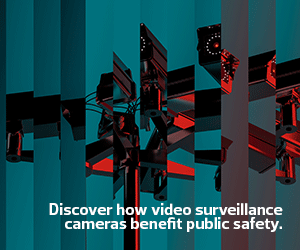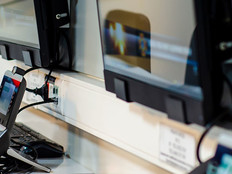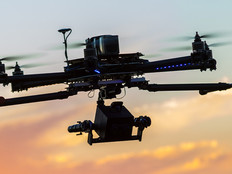Fallacy: Video Surveillance Technology Is Not Versatile
Wireless video surveillance is a multipurpose public safety technology that’s not only used for crime reduction. There are several other practical applications that include event monitoring, traffic control and enforcement, and hazmat response. Surveillance is used to keep an eye on crowded public events such as political rallies and sports games.
Using surveillance in these instances significantly improves safety and crowd control. For event monitoring, a different type of surveillance may be used, such as a portable wireless solution deployed for a short time and reused at other events. Portable solutions are also deployed during building fires and hazmat incidents to help firefighters and hazardous materials specialists make quicker decisions.
MORE FROM STATETECH: 5 reasons to upgrade analog video cameras to digital.
Fact: Data Analytics Significantly Improve Surveillance
The latest video surveillance solutions come with analytics software that can thoroughly monitor an area and alert the police or public safety presence on the street or a command center about crimes in progress. The recordings from these incidents also can be analyzed later to aid investigations. With video analytics, command centers can manage hundreds of cameras, which wasn’t possible in the past.
The National Institute of Standards and Technology has been testing a tool that could make it easier for public safety agencies to use cutting-edge analytics to detect footage of incidents or crimes streaming live from specific cameras. The tool, called the Analytics Container Environment, is a modular framework for running containerized analytics on streaming video.
Fallacy: Only Public Safety Can Access Video Surveillance
The general public can access surveillance footage too. For example, the Citizen Virtual Patrol is a network of publicly owned cameras in Newark, N.J., that show what’s happening on the streets. It was created to allow people in the community to virtually patrol their neighborhoods and help the police spot criminal activity.
Newark’s Department of Public safety has dubbed the technology an “invaluable tool for real-time crime reporting.” The 24/7 public surveillance system is linked to hundreds of cameras in Newark, allowing anyone with an account to sign in from a web browser. While this has raised privacy concerns among some groups, the cameras only show what an observer on the street would see.
EXPLORE: How Raleigh, N.C., uses data analytics to improve traffic management.
Fact: Artificial Intelligence Reduces False Alarms
Artificial intelligence is another technology that has improved video surveillance. Advanced AI modeling, for example, continually learns what a typical scene looks like and reduces false alarms since it can recognize abnormal events. Meanwhile, metadata filtering automatically recognizes places, objects and activities. The metadata relating to every scene is then processed and stored, which helps speed investigations related to certain incidents. Public safety can use the metadata to identify people and add context to video streams. As a result, intelligent information can be retrieved from massive amounts of footage.
Then, there’s behavioral analytics, which has already been integrated into some cutting-edge surveillance systems around the world. At the height of the COVID-19 pandemic, this AI-enabled software was used by municipalities to enforce social distancing rules.












